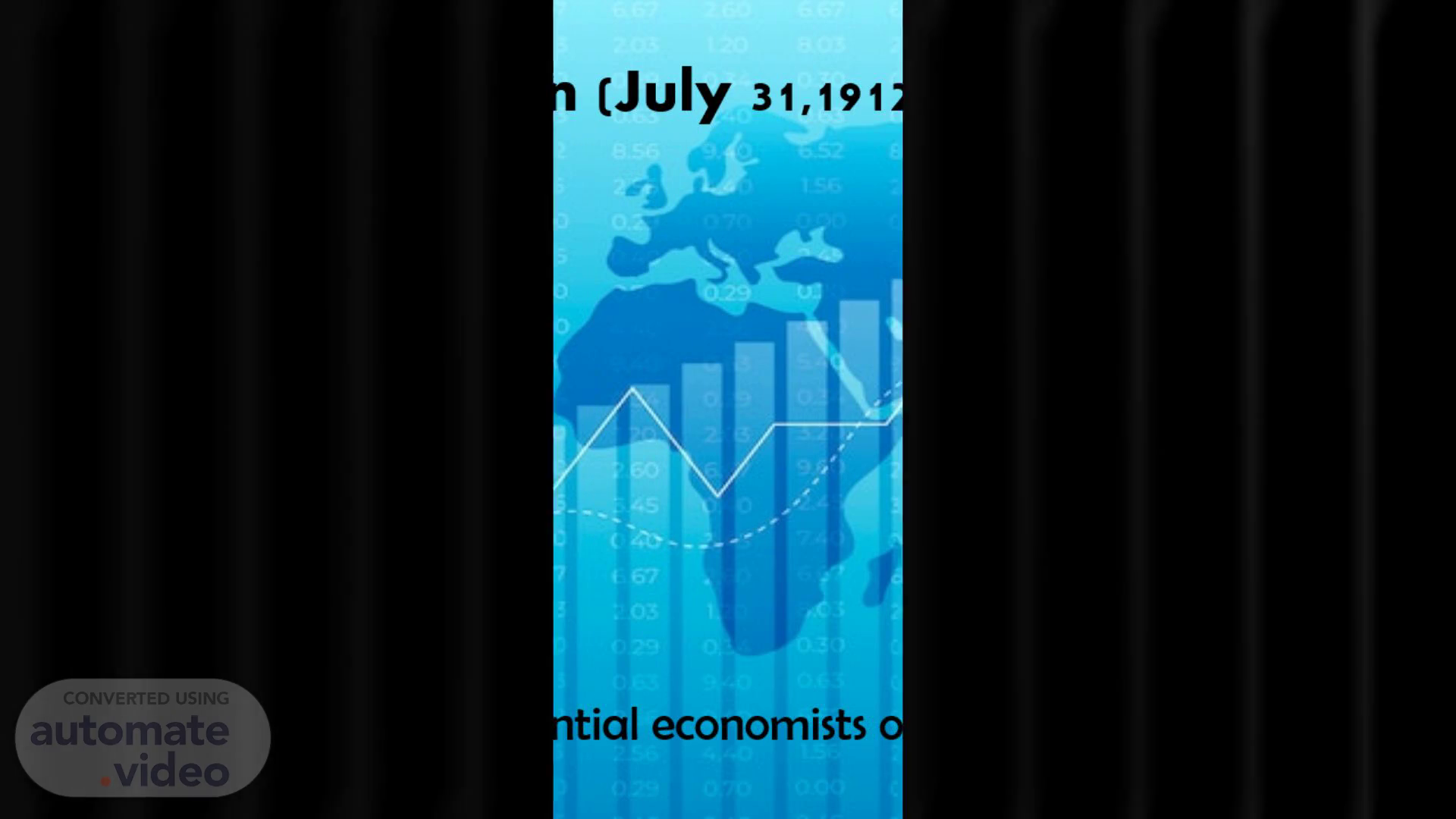
Milton Friedman (July 31,1912 – Nov 16,2006)
Scene 1 (0s)
[Audio] Hey good afternoon sir, this is Pranjal Patel and today I would like to introduce you to one of the most well-known, controversial and influential economists of 20th century..
Scene 2 (5s)
[image] Photograph of Milton Friedman his parents and other family in front of tree Calisphere.
Scene 3 (49s)
[image] Presidential Medal of Freedom Wikiwand. On your left, you can see the awards which were won or gained by Milton Friedman in different years. But the most prestigious one is the ‘Nobel Memorial Prize’ in the field of Economics which he got in year 1976 because of his analysis and monetary theories. Nobel Prize.
Scene 4 (53s)
Free photo dollar banknotes frame. Absolute, Relative and Permanent Income Hypothesis.
Scene 5 (1m 31s)
undefined. Economic Theory Milton’s Thesis John’s Theory 1. government Intervention Argues against government intervention and believes that it leads to economic instability. Stands for government intervention in recessions to stimulate economy. 2. Inflation Suggest that there’s a bargain between unemployment and inflation.- ‘Freidman Phelps’ Doesn’t explicitly connect unemployment and inflation. 3. Unemployment Introduces natural unemployment and its relation to inflation. Believed government intervention could reduce unemployment. 4. Stagflation Explains that stagflation contributes to a shift in economic thinking. His theory struggles to explain stagflation..
Scene 6 (2m 55s)
3. Influences on Milton’s Eco. Philosophy. 1. Arthur Frank Burns:- - Arthur was an economics professor at Rutgers University and also a mentor of Milton. - He taught and introduced Milton the ‘Alfred Marshall’s Principle of Economics.’ Burns was a pragmatist person which molded Milton’s view towards economic research. - Around 1937, Burns extended an invitation to Friedman to join the National Bureau of Economic Research. - Like wise Milton, Arthur also believed that monetary policy is important. Moreover, Friedman’s work was also influenced by Burns’ macroeconomic theories..
Scene 7 (3m 42s)
Other 2 influences.
Scene 8 (3m 47s)
23.1: The Relationship Between Inflation and Unemployment ....
Scene 9 (4m 44s)
IISC_EqualityVsEquityCartoon. 4. “A society that puts equality before freedom will get neither. A society that puts freedom before equality will get a high degree of both” – This shows that if a society prefers equality over freedom, it may end up compromising people’s freedom which could result in neither pure equality nor freedom that exists. On the other hand, the second sentence states that when a society prioritizes freedom, it would allow everyone to follow their own paths. But in such society, equality would be a branch of freedom, because when people have the right to make their own choice, there would be equal opportunity to succeed and people wont be judged by caste, race, gender, colour, etc..
Scene 10 (6m 22s)
IMS part 2. What is Corporate Social Responsibility (CSR)?.
Scene 11 (7m 18s)
Disagreeing with Bretton Woods Agreement:- In 1944, representative from 44 countries met at Bretton Woods to design a new internation monetary system that would ease economic growth after WW2. Bretton Woods Agreement stated that gold was the basis for U.S.D and other currencies like YEN, CAD, EUR, GBP along with 40 other countries were pegged to U.S dollar’s value. Under this – A fix exchange rate system was established and all the currencies were fixed to gold but only U.S.D was convertible to gold directly. Devaluation couldn’t be used as a competition and a country couldn’t devalue its currency by >10% without IMPF approval. - Friedman argued that this could lead to economic imbalances which was I guess true to an extent. But because of this, many economists and people started opposing him which was a challenge. But in early 1970s, Woods system collapsed and big countries adopted flexible exchange rates. Abolition of Regulation Q:- Regulation Q was a bunch of regulations released by U.S government that imposed interest rate ceilings(max interest is allowed) on deposits. As talked before, Milton was free-market supporter and less government intervention in economic affairs. According to Regulation Q, the interest rates were fixed but Milton insisted that rather they should be variable, shaped by demand sand supply..
Scene 12 (8m 20s)
undefined. LOOK OVER THERE!!!. 6. How Today’s Economy is Related to Friedman’s Theories.
Scene 13 (9m 10s)
Boardroom Version of Misc Musings, Rants, Ravings, and Random Thoughts | Page 947 | Ars OpenForum.